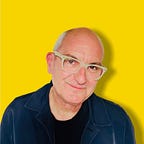24 Rupert Street — formerly Sound City
This is part of the Walk on the Wild Side project by Jackie Hopfinger and Mike Press. Read more at the project publication page.
“What happened was simply this. After I left you yesterday evening, Harry, I dressed, had some dinner at that little Italian restaurant in Rupert Street you introduced me to, and went down at eight o’clock to the theatre…”
Oscar Wilde — The Picture of Dorian Gray
At the time of writing 24 Rupert Street is an empty shop, but like every building in Soho it has been many things in its time. In the case of number 24 that time begins in 1728 when the terrace of which it is a part was built on the northern edge of the Earl of St Albans’ farm estate. Oscar Wilde not only gives the street a brief mention in Dorian Gray, but he is known to have frequented its male brothels. The extent to which this building played any part in Rupert Street’s history of decadent bohemianism will probably never be known — but we do know it played a brief but crucial role in Soho’s musical history.
Ivan Arbiter was sixteen when he set up his own musical instrument repair business in a cramped Kingly Street basement just after the second world war. Basements in that part of Soho were small, affordable and ideal for testing trumpets and other loud instruments without disturbing the neighbours. His father played sax in big bands which sparked his interest as a boy — less in playing, and more in the mechanics of the instrument. In 1943, he was taken on as apprentice saxophone repairer at a small workshop in Soho Street. Surrounded by the theatres and music halls of central London, there was a steady demand for instrument repairs, which only increased in post-war London and gave him the impetus to strike out on his own.
His repair business made steady progress, eventually enabling him to expand into buying and selling instruments from an outlet on Shaftesbury Avenue in 1957. Still focused on brass and woodwind, the skiffle boom provided new opportunities and before long Arbiter moved into the guitar and drum business. Drums led the way, with Arbiter establishing his Drum City showroom at 114 Shaftesbury Avenue in 1961, and his Sound City guitar and amp shop on Rupert Street the following year.
In October 1962, Brian Jones walked in off the street to buy a guitar for the group he’d just formed — The Rollin’ Stones. Sound City was one of the first stores to cater for this burgeoning market. In the sixties and seventies Shaftesbury Avenue and Charing Cross Road, along with Denmark Street, were full of music stores — every one with its own range of instruments and equipment, together with its own distinctive personalities created by their founders and staff — all of whom shared a collective passion for music, and the people who created it. Each store had its own backstory and its own very particular contribution to our musical culture.
Ivan was working at Rupert Street when his assistant at Drum City phoned him about a customer who was showing some reluctance to pay for a new drum kit — so he hurried up the road to see what was going on. Brian Epstein had walked in with Ringo Starr whose heart was set on the new Ludwig kit displayed in the window. It was early 1963, and the group had secured their first number one hit, so a deal was not unreasonable but Ivan wouldn’t be giving the kit away for nothing. As Ludwig’s sole agent in London and gambling on Ringo’s group not being one-hit wonders, he agreed to take Ringo’s old kit in exchange on condition that the Ludwig name would be seen prominently on the bass drum. Epstein agreed — as long as the group’s name featured as well. Ivan quickly sketched out the group’s name in on a scrap of paper in block capitals with a larger ‘B’ and an extended ‘T’, explaining that it would cost Brian five pounds for a local sign writer — Eddie Stokes — to produce the logo on the drum. A deal was done, and a five pound note handed over. And that was how the most recognisable logo in popular music history was created.
A few weeks later, George Harrison visited Sound City to buy a Gretsch Country Gentleman guitar, days after which the new Ludwig kit and Gretsch guitar were carried into Abbey Road for their first recording session. The song they recorded — She Loves You — with its urgent opening drum fill and deliberately played guitar arpeggios became the top selling single of the 1960s.
_____________________________________________
Song
She Loves You — The Beatles
